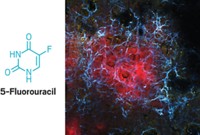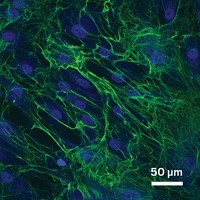Advertisement
Grab your lab coat. Let's get started
Welcome!
Welcome!
Create an account below to get 6 C&EN articles per month, receive newsletters and more - all free.
It seems this is your first time logging in online. Please enter the following information to continue.
As an ACS member you automatically get access to this site. All we need is few more details to create your reading experience.
Not you? Sign in with a different account.
Not you? Sign in with a different account.
ERROR 1
ERROR 1
ERROR 2
ERROR 2
ERROR 2
ERROR 2
ERROR 2
Password and Confirm password must match.
If you have an ACS member number, please enter it here so we can link this account to your membership. (optional)
ERROR 2
ACS values your privacy. By submitting your information, you are gaining access to C&EN and subscribing to our weekly newsletter. We use the information you provide to make your reading experience better, and we will never sell your data to third party members.
Biological Chemistry
Accelerating Diabetic Wound Healing
Inhibiting an enzyme involved in tissue remodeling helps stubborn wounds heal in diabetic mice
by Journal News and Community
October 14, 2013
| A version of this story appeared in
Volume 91, Issue 41
Each year, tens of thousands of people with diabetes in the U.S. have a lower limb amputated because a foot wound failed to heal. Identification of an enzyme that interferes with healing in diabetes patients may help prevent these amputations. Mayland Chang of the University of Notre Dame and colleagues looked for matrix metalloproteinases (MMPs) in the wounds of healthy and diabetic mice. The enzymes remodel the extracellular matrix in tissue during wound healing. The scientists used micrometer-sized polymer beads decorated with an inhibitor to snag active enzymes in the wounds. They detected active MMP-9 in both normal and diabetic tissue but found that levels of MMP-9 were almost two times as high in diabetic wounds as in normal ones, suggesting that MMP-9 is a roadblock to swift healing (ACS Chem. Biol. 2013, DOI: 10.1021/cb4005468). They treated wounds in diabetic mice with an inhibitor of MMP-9 and found that the wounds were 92% healed after 14 days, compared with 74% wound closure in untreated mice. The finding suggests that enzyme inhibition could be a wound treatment strategy.





Join the conversation
Contact the reporter
Submit a Letter to the Editor for publication
Engage with us on Twitter